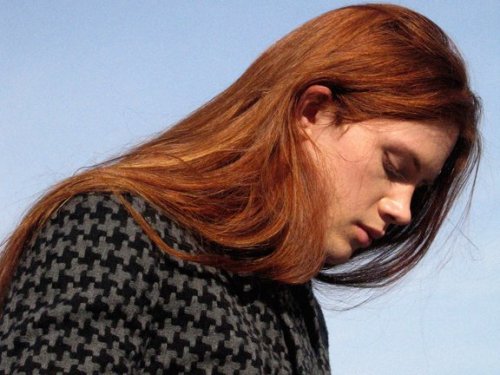If red hair is so rare, why does it occur so often in the same geographic area? Some biologists think that it’s an evolutionary adaptation. In cold and dark climates, fair coloring lets the skin absorb more light, which encourages the body to retain heat and produce more vitamin D. Also, for most of human history, people didn’t stray very far from the place where they were born and intermarried with people with similar genetic traits. When there were plenty of people carrying the gene, their children were very likely to get two copies of the mutated MC1R. Now that people migrate more, carriers of MC1R are more likely to intermarry with non-carriers. That’s good for genetic diversity, but maybe not so good for the survival of redheads in general.
For the past few years, there’s been a rumor that redheads are going extinct, but that’s not exactly true. Because of intermarriage, the numbers are declining, but there will always be redheads, ![]() because there will always be carriers of the MC1R gene. It might be less likely that one carrier will meet another and have redheaded children, but it’s always a possibility. In fact, it’s not so far-fetched to imagine a future where everyone knows exactly what’s in his or her genome, and MC1R carriers can choose to have children with fellow carriers, maximizing the likelihood that their children will have red hair.
because there will always be carriers of the MC1R gene. It might be less likely that one carrier will meet another and have redheaded children, but it’s always a possibility. In fact, it’s not so far-fetched to imagine a future where everyone knows exactly what’s in his or her genome, and MC1R carriers can choose to have children with fellow carriers, maximizing the likelihood that their children will have red hair.
A Redheaded “Knockout?”
The mutated MC1R gene has some other surprising effects. Although doctors and medical practitioners have long speculated that redheads were harder to sedate, a recent study from the University of Louisville determined that redheads really do require more anesthesia during surgery.
The researchers ran an experiment where they put women under sedation, and then tested their response to pain. The redheaded patients required 20 to 30 percent more anesthetic than other women to achieve the same level of sedation. (I experienced this firsthand last year...laughing gas does not work on me) ![]()
Scientists at the university also tried to replicate the experiment with mice, and found that animals with a MC1R mutation required more sedation, too. They theorize that the mutated gene somehow has implications beyond hair color, and perhaps affects hormones or enzymes involved in our neurological system.
 New topic
New topic Printable
Printable





 Report post to moderator
Report post to moderator























































